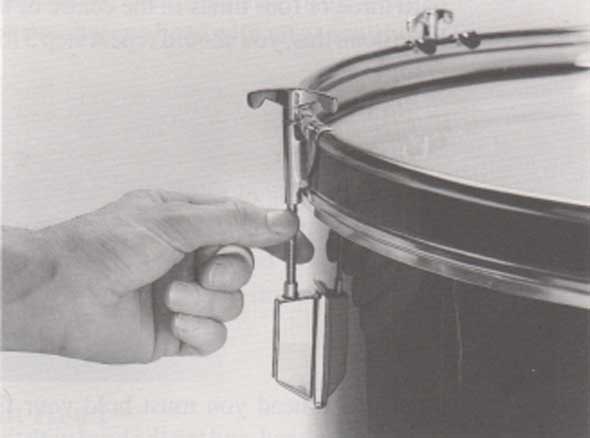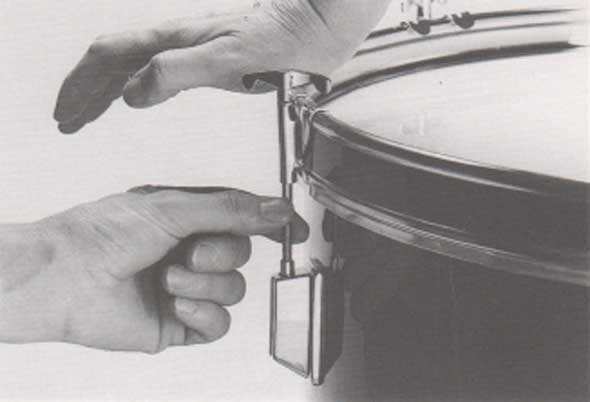
The Playing Head
Step 1: Stand the bass drum shell on its end with the playing side up. It is best to do this on a carpeted floor to prevent scratching the drum.
 Bass Drum Shell
Bass Drum Shell
Step 2: Place the playing head onto the shell. If you are fitting a new head, make sure that the brand will be at the top when the drum is in its upright position.

Bass Drum Playing Head
Step 3: Place the bass drum counter hoop into position. Some bass drum counter hoops have a rubber seat where the bass drum pedal clamps onto the hoop. If this is the case, make sure that the rubber seat will be at the bottom when the drum is in its upright position.

Bass Drum Hoop
Step 4: Using your thumb and index finger, lightly screw the tension rods down against the counter hoop.

Seating the Tension Rods
Step 5: Using the heel of your palm, press down hard on the counter hoop and repeat the process of screwing in the tension rods. Work around the drum two times and you will have reasonably even pressure at each tension point.

Seating the Counter Hoop
Step 6: With one hand on top of the other, and again using the heel of your palm, you must stretch in the heads by pushing down hard three or four times in the centre of the head. When you have done this, you should repeat step 5 (Seating the Counter Hoops).

Stretching the Head
Step 7: To tune each head you must hold your finger lightly in the center of the head, and tap the head with the drumstick, 20mm in from the edge at each tension point. You must adjust each tension rod so each point sounds the same as the other. To raise the pitch, you must tighten the tension rod. To lower the pitch, you must loosen the tension rod.

Tuning the Head
When you have finished, if you press down firmly in the centre of the head, it should move approximately 15mm.